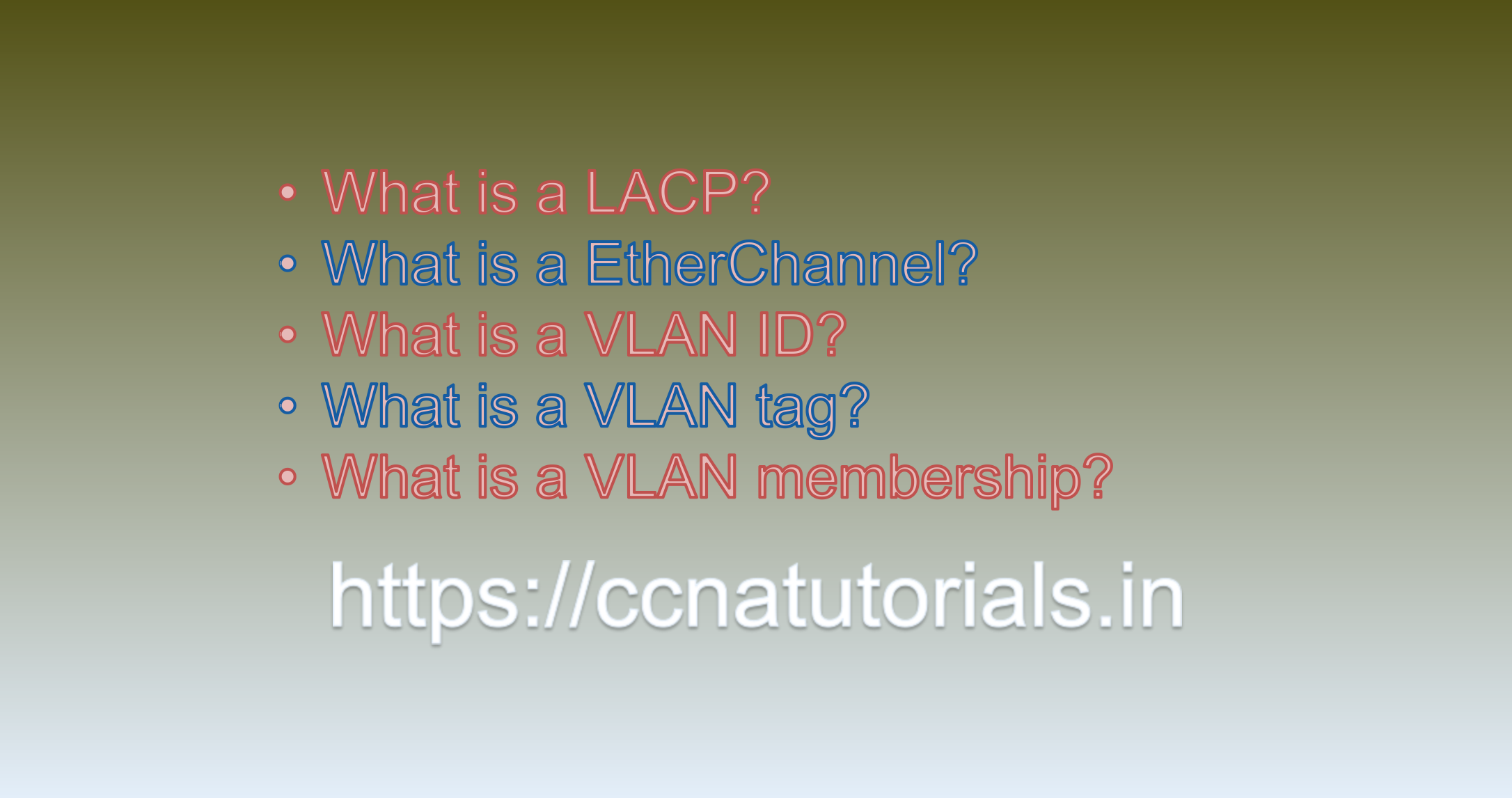Contents of this article
In this article, I describe some CCNA sample questions for practice before appearing in the CCNA 200-301 exam. The following questions are basic questions and related to the CCNA sample questions set 24. There are multiple sample questions set on this website for prior practice online. All questions are described with relevant answers. You can take the following questions and answer as reference for CCNA 200-301 exam. You may also need to do more practice with other websites and books to practice the CCNA sample questions set 24.
Question 1. What is a LACP?
LACP stands for Link Aggregation Control Protocol. It is a protocol used to bundle multiple physical network connections together into a logical channel, thus increasing bandwidth and providing redundancy. LACP allows two network devices to negotiate the formation of a link aggregation group (LAG) by exchanging packets. The LAG appears as a single link with a single MAC address to the rest of the network, making it easier to manage and providing increased availability and reliability. LACP is commonly used in data centers and other high-performance computing environments. This is the answer to question 1 of CCNA sample questions set 24.
Question 2. What is a EtherChannel?
EtherChannel is a networking technology that enables the bundling of several physical Ethernet links to create a single logical link between two network devices. This logical link behaves like a single, high-bandwidth link, which improves network performance, provides redundancy, and simplifies network management. EtherChannel combines multiple Ethernet links into a single logical link, which appears as a single logical interface to the network devices. The physical links can be of the same or different speeds and can span multiple physical switches. EtherChannel is commonly used to connect switches to other switches or routers, servers to switches, or storage devices to switches. This is the answer to question 2 of CCNA sample questions set 24.
Question 3. What is a VLAN ID?
A VLAN ID, also known as a VLAN Tag or VLAN Identifier, is a numerical identifier that is used to identify a specific VLAN in a switched network. It is a 12-bit field in an Ethernet frame that is inserted after the Source Address field and before the EtherType/Length field. The VLAN ID enables network administrators to partition a physical network into multiple logical networks, each with its own broadcast domain, which improves network security and performance. This is the answer to question 3 of CCNA sample questions set 24.

Question 4. What is a VLAN tag?
A VLAN tag is a small piece of data that is inserted into the header of a network packet to indicate which Virtual Local Area Network (VLAN) the packet belongs to. It is also known as a VLAN header or a tag. VLAN tags are used to allow multiple VLANs to share a single physical network infrastructure, while still maintaining network isolation and security. The tag consists of a 12-bit VLAN ID that identifies the VLAN the packet belongs to and a 3-bit priority field that specifies the packet’s priority level. VLAN tags are used by switches and routers to forward packets between VLANs based on the VLAN ID. This is the answer to question 4 of CCNA sample questions set 24.
Question 5. What is a VLAN membership?
VLAN membership refers to the configuration that determines which devices are assigned to which VLANs in a network. A VLAN (Virtual Local Area Network) is a logical grouping of devices within a network, allowing for enhanced security, traffic control, and better use of available network resources.
VLAN membership can be assigned based on a variety of criteria such as port, MAC address, protocol, or subnet. By assigning devices to different VLANs, network administrators can isolate traffic and control the flow of data between different parts of the network. This can help to prevent security breaches and optimize network performance. This is the answer to question 5 of CCNA sample questions set 24.
Conclusion for CCNA sample questions set 24
In this article, I described 5 questions with answers related to CCNA 200-301 exam. I hope you found these questions helpful for the practice of the CCNA 200-301 exam. You may drop a comment below or contact us for any queries related to the above questions and answers for CCNA 200-301. Share the above questions If you found them useful. Happy reading!!






